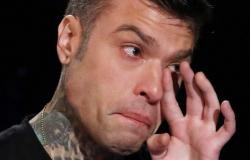LECCE – The placement of the statue of Sant’Oronzo on the Roman column, which took place on Saturday, was preceded and followed by a trail of controversies inevitably steeped in the electoral campaign (as is inevitable for anything that happens in the vicinity of a vote, even if it is the the outcome of a journey that began many years earlier).
The hottest topic is that of the degree of similarity between the new statue and the previous one, restored and on “protected” display at Palazzo Carafa, since the conditions of the materials it is made of (wooden structure, copper cladding) are thus compromised by atmospheric agents, they advised against repositioning it on the column. The indications of the experts have gone in this direction. It seems obvious to remember this, but when knowledge amplified by the use of social media too often replaces competence, nothing is superfluous: as if the opinion of an expert, perhaps with a very respectable CV, were as valid as that of a doctor, of a salesman, of a football coach, of a tire dealer.
“It’s a little different.” “It’s completely different.” The nuances of the theory of dissent have ranged in the gray area of distrust and perplexity, even touching points of disdain and going beyond the legitimate field of opinions to cross over into that of excommunications and final sentences. In short, we have heard all sorts of things in recent days and there are those who have even asked for access to the documents fearing a waste of money. It certainly wasn’t public money, since the statue was created with the free contributions (tax deductible) of citizens and businesses. It was created, after the approval of the executive project by the Superintendency, by Fonderia Nolana Del Giudice, one of the national excellences in working with the lost wax bronze technique (it also made the copy of the Madonnina of the Milani Cathedral). , after preliminary research and study work involving Professor Raffaele Casciaro, professor of Museology and History of Art Criticism and Restoration at the University of Salento.
He was the scientific consultant on the technique and materials, issues which he explained in a public meeting last Friday, proposing in-depth studies on the “original” statue and the characteristics of the creation of the copy. Professor Casciaro reiterated the same arguments in a post on his profile which is reproduced here in full in order to guarantee the right to speak in the public debate to the person who – following the indications of the Superintendency and in agreement with the curia and the Municipality – has put at the service of an operation that the city had been waiting for since January 2019, when the restorers working on the column realized that the statue was in such bad shape that it had to be brought back to the ground.
The eighteenth century statue
“Given the numerous questions on the matter, all legitimate, I would like to answer especially on the question of the similarity of the copy to the original statue. The signs of the nails and rivets, the excessively raised crests of the copper sheets and some dents were simply eliminated (and not completely): it would not have made sense to reproduce these technical details and these damages in a work carried out with different material from the ‘original. In the 18th century he resorted to a cheaper and simpler technique, which from a distance suggested the image of a work in bronze. Very soon the work began to deteriorate precisely because of this choice. Thus began repairs and replacements, even heavy ones, which affected both the internal wooden structure and the copper cladding.”
The details of the face
“Especially in the face, the large quantity of rusty rivets, cracks, defects and corrosion, although an excellent restoration was carried out, has produced a very compromised surface, which can hardly be defined as ‘original’. The face of the new Sant’Oronzo is simply smoother and more compact, also because instead of being made of many ‘sewn’ plates, it is obtained in a single bronze cast. The differences, also due to the different effect of the light, could not fail to exist. But, beyond this, it is a work of our time, which cannot be identical to one from almost 300 years ago. The new statue is a respectful homage to the old one, it replaces it by faithfully remembering it but does not pretend to be the original.”
The cloak: a question of perspective
“As for the dynamism of the mantle and, in general, the posture of the statue, in reality I do not notice any differences, which are if anything produced by the observation point, the distance and the light, as is evident now that the statue is placed where it was expected to be. The copy, like the original, is made to be seen from below and from afar. Furthermore, depending on the angle of the photos, the coat of the copy may even appear more wavy, even though it isn’t. No one, on the other hand, has observed how much the rendering of the decorations on the mantle has improved, due to the elimination of surface defects, which can now be read more distinctly in all their late Baroque elegance”.
LeccePrima is also on Whatsapp. Follow us on our channel.
Tags: expert explains technique details





